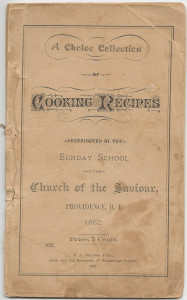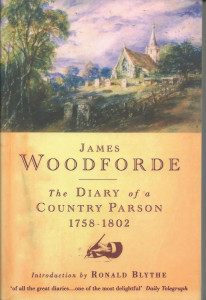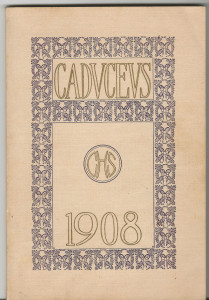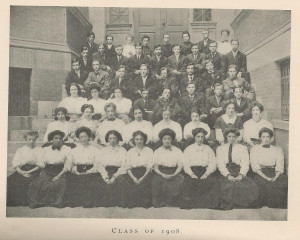 How many of you researchers love primary sources? Is anyone’s hand NOT raised?
How many of you researchers love primary sources? Is anyone’s hand NOT raised?
One of the things I love best about researching is that moment when you stumble across some telling tiny detail that just resonates…. Diaries, letters, and other materials from centuries past offer a trove of detail rich enough to make a researching author sing for joy. Where would we be without Jane Austen’s letters? How would we know what colors were in fashion, or how seams were sewn, without period magazines, dressmakers’ patterns or samples of clothing? Just for examples. While we may learn some of these things through secondary sources, we wouldn’t have THOSE without the primary sources to be studied and interpreted first.
I am currently deep in the middle of two quite different published collections of letters and diary excerpts, Penelope Hind’s (thank you for the loan, Elena!) and James Woodforde’s famous “Diary of a Country Parson”. As is so often the case, parts of them are wonderful and parts less so.  Because these published versions have been edited, I wonder about the parts that have been left out –probably dull, but what if something useful to me (not to the editor) was in there? I would have loved to have the job of reading through the originals. Do you also think this way?
Because these published versions have been edited, I wonder about the parts that have been left out –probably dull, but what if something useful to me (not to the editor) was in there? I would have loved to have the job of reading through the originals. Do you also think this way?
What got me thinking about this topic, though, was spring cleaning. My younger son, temporarily out of work, has been helping out at home by bravely delving into boxes that have been sitting in various corners ever since we moved here –and I don’t want to tell you how many years ago that was. Many belonged to my mother, who passed away four years after we moved here, and that was not recently!
Amazing things have been coming out of the boxes, besides trash (junk mail still unopened from when we moved, for example) –two items pictured here were too old to belong to my mother. Who knew we had this stuff? 
The 1882 recipe booklet (at top) is filled with ads for local businesses on all the pages facing the recipes. It is too old even for my grandmother. Did it belong to my great-grandmother? The ads remind me of my favorite type of primary resource, old newspapers. Do you have a favorite?
The “Caduceus 1908” was a mystery, even after I saw it was a sort of yearbook from the senior class of Classical High School in Providence, RI. Why did we have it??? As I perused the pages, amused by descriptions of events and the humor, I stumbled across write-ups of the individual class members and discovered that my paternal grandmother was a member of this class. I can pick her out clearly in the class photo (blonde in the center of the 2nd row) –because she looks so much like my sister!
 I knew she had been a school teacher, but love this glimpse of her earlier life. My imagination runs with it. She did not live in Providence and must have had a long trip by trolleycar and on foot each day to get to school and home again.
I knew she had been a school teacher, but love this glimpse of her earlier life. My imagination runs with it. She did not live in Providence and must have had a long trip by trolleycar and on foot each day to get to school and home again.
I won’t be keeping these, fascinating as they are. But I hope to find good homes for these treasures. “Museum mentality” is the bane of those of us with cluttered homes. We can’t hang onto everything! But what if no one ever did? Those precious letters and diaries, those old newspapers and magazines from long ago that we now enjoy so much, that give us glimpses into the real lives of people in the past? What if zealous spring cleaners had tossed them all?
Do you wonder, as I do, if all the electronic versions of everything we have now were to disappear (or, as we have repeatedly seen, become inaccessible as technology keeps changing?) –what are we leaving for future generations to study? I know it won’t be stuff from my house. The chorus around here lately is “just throw it out!” However, at least a few treasures deserve to be “re-homed”, as I call it. I just wish that didn’t require so much extra time. What do you do with your clutter?
